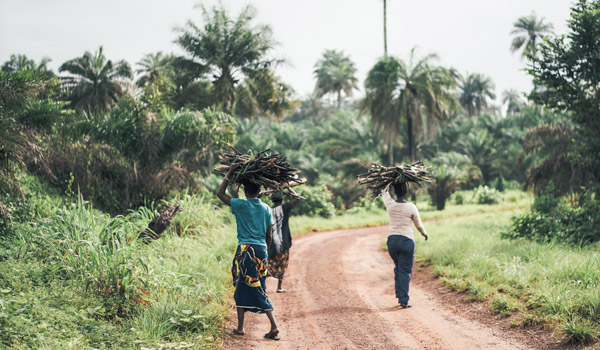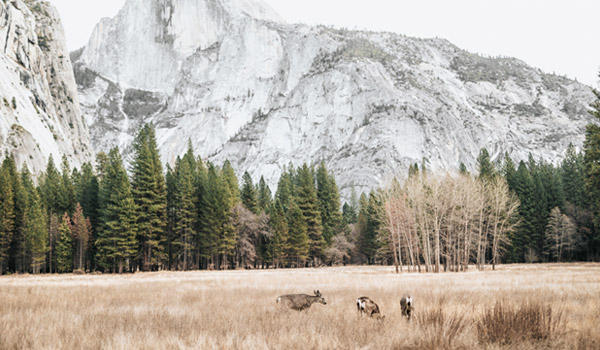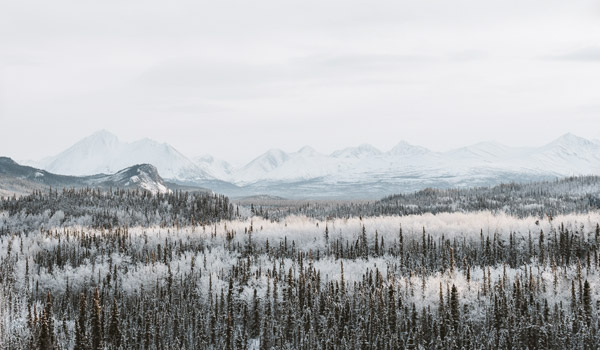ONE ORDER - ONE TREE
Forests are the lungs of earth and key to our survival. Yet, these critical organisms are dying at a rapid rate. According to Time Magazine, 13 billion trees are cut down each year. For the sake of all species living on earth as well as for all future generations, it is our responsibility to safeguard Mother Nature. To do our bit, we launched the One Order - One Tree Initiative and pledge to plant one tree for every purchase on our site. Thereby, we plant a tree on the continent where the respective customer comes from.
![]()
1. Order
Your order sets the wheels in motion; guaranteed for every purchase.
![]()
2. Plant
One seed is planted by our entrusted partner for each of your orders.
![]()
3. Grow
Your seeds are cared for professionally and will turn into trees over time.
![]()
4. Flourish
All these trees will eventually turn into forests. Mother Nature will thank you.
Why are trees so important for the environment?
We all know that trees are very important not just for us humans but for all living beings on our planet. Yet, most of us don't know about all the areas of our lives that trees positively impact. Here are the six areas that trees have a large influence on.
AIR
Trees are the symbol of life. It is common knowledge that our existence is tightly knit with the existence of trees and their oxygen producing capacity. Yet, trees do not just create oxygen but also filter the air we breathe. Trees help to reduce and remove harmful pollutants like carbon dioxide, nitrogen dioxide, ozone and fine particulate matter like dust, ash and smoke, which are deposited into the atmosphere by industry and transport. The carbon (Co2) that is released into the air, primarily by burning fossil fuels, is absorbed by trees, which store up to 25% of the world's carbon. Trees therefore act as carbon sinks massively reducing the effects of climate change.


WATER
Flash floods and landslides kill an estimated 25,000 people per year worldwide. With their intricate root systems and their canopy, trees play a key role in capturing rainwater and slowing down the rate at which water is being absorbed into the ground. According to the Food and Agriculture Association of the United Nations, a mature tree can intercept more than 15,000 liters of water every year. Further, trees act like a sponge and filter pollutants in the rain and prevent them from running into the ground water.
SOCIAL IMPACT
The forestry industry provides a vast variety of job opportunities and the timber from trees is an important material for the construction of homes and shelter as well as for heating. Further, food-producing trees are an important contributor to a healthy and nutritious lifestyle for both humans and animals. Apart from the direct influence trees have on our life, they also impact our lives in many indirect ways: They significantly upgrade the aesthetic appearance of cities, bring people together in parks and playgrounds, contribute to a sense of town or neighbourhood price, and deflect the sunlight to break up urban heat islands. The economic importance of trees is underscored by the fact that trees can even raise property values by as much as 15 percent.


HEALTH
Studies have shown that trees can have significant influence on our moods and health: patients who can see trees through their hospital window show a more rapid recovery rate, children with ADHD show fewer symptoms when they have access to nature, tree coverage reduces the risk of skin cancer through harsh sun rays, violence in greener neighbourhood areas is much lower than in their grey counterparts, and trees have a positive impact on concentration by reducing mental exhaustion. The health benefits of walking through a quiet calm forest and breath in the fresh air provided by trees is undeniable.
BIODIVERSITY
Just like houses to us, trees are homes to a sheer endless number of forest animals, fungi, moss, and plants. They all prefer different types of habitats which satisfy their food and shelter needs. Without a diverse landscape of tree life all these living beings would not have a home and our planet would lose out on the breathtakingly beautiful and incredibly diverse animal and plant life.


CLIMATE
Global warming caused by harmful greenhouse gases, like carbon dioxide, is one of the biggest problems we are facing today. Trees can help alleviate the problem by storing these gases in their trunks, branches, and leaves. Yet, trees not only store carbon dioxide but turn it into vital oxygen through photosynthesis. That way, mature trees can absorb almost 150 kg of dioxide per year both contributing to the cooling of the planet and creating a healthier environment.